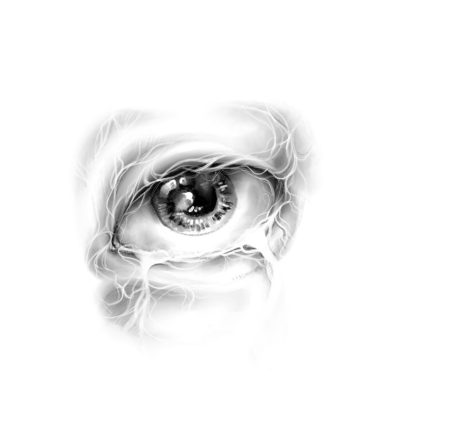Gear up to tear up
September 15, 2022
“Best spots on campus to cry?” an anonymous student asked on Yik Yak at the beginning of the semester.
(Answers vary depending on who you ask: some people swear by music building practice rooms; others prefer an outdoor bench, or a spot under a tree.)
Walk around Whitman, and you’ll hear ample, unabashed discussion of crying. Step into the alcoves of an academic building, and you might even hear some crying! Many of us discuss it easily in passing — frustrated tears over a last-minute essay or an accidental cry during office hours. When someone hesitates at our cavalier attitude or tries to offer support instead of laughing along, we grow defensive: no, it’s funny that my fiction professor had to slide the box of tissues across his desk, carefully avoiding eye contact. This close-up flash photo of my face contorted in misery is funny.
Senior Buddy Moench expressed frustration towards this relationship to crying. In high school, his girlfriend had a group of friends who thought of crying in a way that Moench described as “kind of a fetish.” They would exchange frequent mid-cry selfies and put money in a “tear jar.”

His objections were twofold. First, he worried that crying so often was the result of living “too harshly,” and that they were placing too much pressure on themselves and wallowing in a constant sort of despair.
“I still think they were hurting themselves,” Moench said, “that they were masochists.”
It’s true that, for many, crying has become sort of endemic to daily life. It’s something we’ve grown accustomed to — you shower, you study and you cry.
In high school, my friends and I embraced a similar crying ethos to the one Moench described. In the same way that sleep deprivation became a badge of honor, crying was often something to boast about. Nothing conveyed scholarly dedication like a late-night selfie, the frame split between U.S. history notes and a tear-stained face. Between demanding course loads and mounting adolescent tensions, it seemed we were crying more frequently than we weren’t. One friend even had a free period that she devoted to crying alone in the library. Crying became no more cathartic than biking to school; it had become another stale routine.
We would eventually learn that we didn’t need to lead lives that fostered incessant crying. Still, at Whitman and at large, a certain faction of us approach crying with an interesting sort of nonchalance.
I don’t mean to place an undue burden on crying — speaking candidly about difficult emotions is something I consider unequivocally positive. Realistically, those with blasé openness to frequent crying form a small minority, and much of the world still feels deep shame around crying.
An example of a Whitman student who tends towards the opposite extreme is Warren Davis. This is a pseudonym for a junior who asked to remain anonymous (a request that demonstrates the secrecy that many people associate with crying). Davis rarely cries, and hasn’t done so in front of another person since high school.
“I’ve definitely cried a few times since getting to Whitman,” Davis said in an email to The Wire, “but I can tell when it’s coming … so I always make sure I’m alone.”
Davis cited anger, frustration and disappointment as the primary reasons he cries. He added, though, that he needs to be “really upset,” otherwise he’s able to ignore it.
Meanwhile, sophomore Sonia Xu is quick to cry in front of others.
“I can’t control my tears,” Xu said, “even when I am surrounded by a group of people who I have just known for a day.”
This happened to Xu in her first several days at Whitman, when The Rolling Stones’ Charlie Watts passed away. What causes her to cry can vary — she often cries from sorrow and grief, but cries just as frequently from joy.
“I think [crying] is as much a usual emotional expression as smiling and laughing is,” she said.
In many ways, I welcome casual dialogue about crying. One perennial truth about college is that everybody thinks they’re the only one struggling, while their peers float through unscathed. Perhaps it’s a good thing to see that other people are crying — constantly.
Still, it’s worth noting that when we welcome crying into our daily lives without reserve, we often stop reflecting on the things that triggered it. Weeks ago, I talked about crying with a friend and former classmate, whose eyes were red-rimmed from crying earlier that morning. She explained that crying had made them feel worse for much of their life, until she began to see it as an opportunity to take stock of her emotions and thoroughly process them.
This reflection is what we often miss. In addition, easy openness about crying often allows for the pretense of vulnerability without any of the work. We can send a thousand crying selfies, tongues stuck to the side in a display of ironic detachment, but can we tell our friends that we’re struggling? We can make offhand remarks about the seven times we’ve cried this week, but can we explain — or understand — why?
“The practice [of crying] should carry far more weight than it does,” Moench said.
In 1872, Charles Darwin suggested that emotional crying served no purpose. A century and a half later, few of us would agree — but our behavior can align us with this statement far more than we might expect. Crying is not a meaningless and immutable byproduct of being alive; if we hold sufficient space for it, it can be a source of enormous catharsis and growth.
Cry to your heart’s content — but let it mean something.




